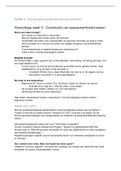Exam (elaborations)
Neuroscience 6th Edition Test Bank by Purves • Augustine • Fitzpatrick • Hall • LaMantia • Mooney • Platt • | 100% Correct Answers | 34 Chapters
Neuroscience 6th Edition Test Bank by Purves • Augustine • Fitzpatrick • Hall • LaMantia • Mooney • Platt • | 100% Correct Answers | 34 Chapters Neuroscience 6th Edition Test Bank by Purves • Augustine • Fitzpatrick • Hall • LaMantia • Mooney • Platt • | 100% Correct An...
[Show more]













